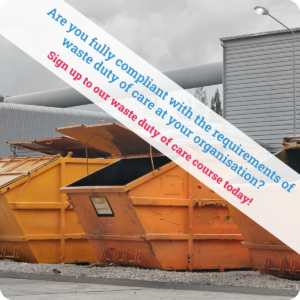Have you noticed that within the public sector, there’s an increasing drive to influence change in its private sector supply chain, to support delivery of sustainability objectives? Improving your purchasing decisions is the key to realising this change.
Developing a sustainable purchasing policy for your organisation is the first step to helping ensure that sustainability is embedded in the procurement process. So, if you don’t already have a sustainable procurement / purchasing policy in place, then continue reading this blog to find out what you need to consider.
A sustainable procurement policy signals buy-in at highest level of the organisation and communicates its ambition and intentions. It also provides a clear mandate for action by budget holders. There are probably more benefits to developing a policy and procuring sustainably than you think.
This includes:
- Long-term savings through whole life cycle costing.
- Improved risk management.
- Progress towards achieving organisational sustainability targets.
- Being better prepared for emerging legislation and policy.
- Improved supplier diversity, e.g. by using small and medium sized enterprises (SMEs) and third sector organisations.
- Promotes co-operation and communication with stakeholders, clients and the supply chain.
- Influences the market to develop more sustainable products and services.
- Help to motivate staff and raise awareness.
Maximising the success of implementing any business process requires senior level sponsorship and commitment and sustainable procurement is no different. By adopting a strategic approach, your procurement department can help ensure that limited resources are aligned to initiatives most likely to generate greatest return on investment – in this case, delivering value for money and reducing sustainability impacts or risks.
5 things to consider for an effective policy
When developing the policy it’s important to address 5 main areas and undertake the following activities:
1. Support and commitment
- Obtain senior-level commitment by involving them from the start.
- Ensure they review, approve and sign off the policy and other associated documents.
2. Responsibility
- Identify individuals within the organisation to be accountable for embedding sustainability within the organisation and procurement process. This should include:
- Designating someone or a team of people as sustainable procurement champion(s).
- Ensuring champions are allocated sufficient time and support to carry out their roles effectively.
- Identifying internal sustainability / sustainable procurement training requirements to enhance the capability of procurement staff.
3. Analysis
- Ensure the policy reflects the organisation’s values and includes a commitment to continual improvement.
- Ensure the policy operates effectively with, and does not contradict other, organisational policies.
- Audit existing practices and tools to identify areas of good practice and areas for improvement.
- Evaluate relationships with existing suppliers ‘ i.e. what do they offer? How do they respond to sustainable procurement questions?
- Determine the economic, social and environmental impacts of the products and services purchased e.g. by carrying out a risk assessment looking at likelihood of impact, severity of impact, value or spend and level of influence.
- Consider the strategic, reputational and operational implications to the organisation.
4. Objectives and KPIs
- Develop key performance indicators (KPIs) and objectives to measure the success of the policy.
5. Communication and review
- Make sure the policy is practical and accessible to all staff.
- Ensure the policy provides a clear statement of intent regarding the organisation’s position on procurement and sustainability.
- Communicate it widely, to all staff, key suppliers, and other key stakeholders in a consistent and clear manner.
- Engage and work with the supply chain to adopt sustainable sourcing strategies ‘ only by doing this will the policy be effective and successful long-term.
Defining a policy in this way provides an organisation with a foundation on which to progress the integration of sustainability in a prioritised and targeted way. However, a sustainable procurement policy alone is unlikely to have the desired effect, so the next step is to develop an action plan from the policy that will help drive implementation. When developing the action plan, consider SMART objectives and targets, and ensure the following areas are covered: leadership engagement, risk, process integration, talent/people, communications, supplier engagement, and new technologies and innovation.
